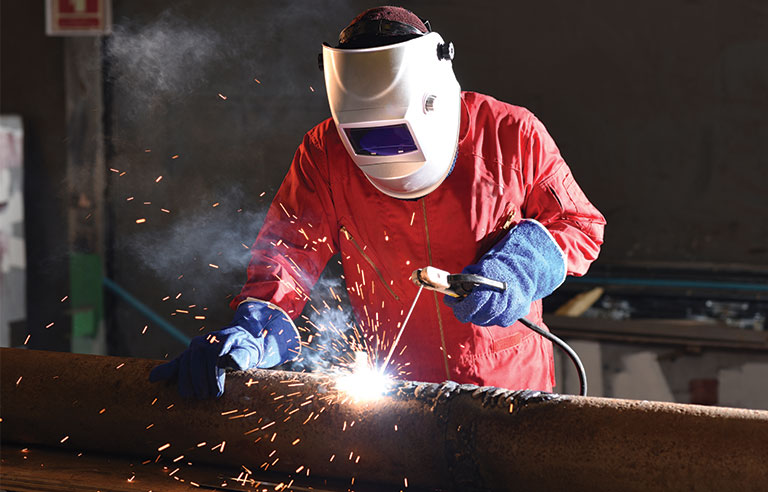Exposure To Volatile Organic Compounds & Welding Fumes
Exposure to Volatile Organic Compounds & Welding Fumes
The below article will tell you about Volatile Organic Compounds and Welding fumes. Under Volatile Organic Compounds it will include what they are, where can they be found, how they can harm your health, and protecting yourself from them. Under Welding Fumes, it will include information on the law of protecting your workers and how to prevent health risks.
The information from the article below has been taken from the American Lung Association, HSM & HSE website. For further information on this subject matter please see the links at the bottom of this article.
Volatile Organic Compound Gases
Volatile organic compound gases are present in everyday life and can be harmless. However, some are not and can be hazardous to both your health and the environment.
In 2019 a UN report showed that someone dies every 30 seconds due to exposure to toxic gases in the workplace.

What are Volatile organic compounds?
Volatile organic compounds (VOC) are organic chemicals that have a high vapour pressure at room temperature. High vapor pressure correlates with a low boiling point, which relates to the number of the sample molecules in the surrounding air, this is known as volatility.
VOCs are responsible for the odour of scents and perfumes and play a significant role in helping Nature. They help with the communication between animals and plants, they can attract pollinators, protection from predators, and inter-plant interactions. However some VOCs are dangerous to human health or can cause harm to the environment. Anthropogenic VOCs are regulated by law, especially indoors, where concentrations are the highest. Most VOCs are not actually toxic, but could have long-term chronic health effects.
Where can VOCs be found?
VOCs can be found in the air indoors and outdoors. A number of these sources can continue to produce VOCs when they are stored or transported. Below is a list of some of the sources where VOCs can be found.
Indoor Sources
- Building materials such as Paint, paint strippers, Varnishes and finishes, Caulks and sealants, Adhesives, Flooring, carpet, and pressed wood products.
- Home & personal care products such as Cleaners and disinfectants, Furniture, Pesticides, Air fresheners, Cosmetics and deodorants, Fuel oil and gasoline.
- Activities such as Tobacco smoke, Dry-cleaned clothing, Arts, and crafts products: glues, permanent markers, etc, Wood burning stove, Office printers and copiers.
- Outdoor sources such as, Gasoline, Diesel emissions, Wood burning, Oil and gas extraction and processing and industrial emissions.
How VOCs can harm your health
Breathing VOCs can irritate the eyes, nose, and throat, they can also cause difficulty breathing and nausea. It can also result in damaging the central nervous system as well as other organs and some VOCs can even cause cancer.
Not all VOCs have all these health effects, though many have several. Details on specific health effects of each specific VOC can be found in the Agency for Toxic Substances and Disease Registry Toxic Substances Portal.
Outdoors, VOCs can cause similar health effects, but can also react with nitrogen oxides which will then result in producing ozone pollution.
Protecting yourself from VOC’S
- Sources such as paints and building supplies, some sources will have a ‘Low VOCs’ information on the label.
- Using a different approach that reduces the need for products that contain VOCs and only using as much as you need for the project and then dispose of any leftover or unused products safely.
- Always follow the manufactures’ directions when using these products.
- Do not smoke and keep all buildings smoke free. Tobacco smoke contains VOCs among other carcinogens.
Welding Fumes
It is the law to protect your workers by controlling the health risks from welding fumes. This law applies to specialist welders and workers who do some or little welding, the amount of welding does not matter however big or small, it is still the law to protect your workers from Welding Fumes.
All welding fumes can cause lung cancer, so it is vital that control measures are put in place. As well as cancer, Welding fumes can also cause other health conditions such as Asthma. The HSE have recently issued a safety alert about the health risks of welding fume.

How to prevent health risks
The HSE have provided some control measures that can be put in place to help protect people’s health from Welding fumes. The HSE have suggested the following:
- Using alternative cold joining techniques
- Welding in a way that produces less fume
- Local exhaust ventilation (LEV)
- Using respiratory protective equipment (RPE) and personal protective equipment (PPE)
- Maintaining control measures and good general ventilation
- Making sure welders understand the risks and how to use controls
Welding fumes are subject to the Control of Substances Hazardous to Health (COSHH) Regulations. The HSE have provided COSHH advice sheets which are on welding, cutting and surface preparation to help businesses comply with COSHH. These can be found by clicking the hyperlink above.
For further information on Welding fumes and how to protect your workers click the link to the HSE webpage below. The HSE provide in depth information on welding such as Controlling the risk, maintain exposure controls, Health surveillance, Training and lastly Welding in detail.

Information Sources
American Lung Association – https://www.lung.org/clean-air/at-home/indoor-air-pollutants/volatile-organic-compounds
HSM – https://www.hsmsearch.com/Home
HSE Welding Fumes – Protect your workers – https://www.hse.gov.uk/welding/protect-your-workers/index.htm
